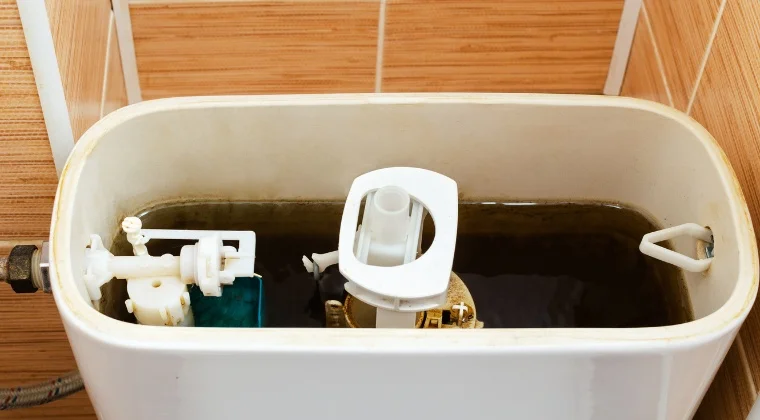
How to Drain Toilet Tank
Draining your toilet tank might sound tricky, but it's pretty straightforward once you know what to do. First, you'll need to turn off the water supply. This is crucial to avoid any messy surprises.
Then, it's all about handling a few simple steps to emptying that tank. Whether it's shutting off the water or solving any issues that come up, there's a clear method to follow.
So, why not learn how to drain your toilet tank today?
Key Takeaways
- Locate and shut off water supply valve by turning clockwise using pliers if needed.
- Empty tank by turning flush valve counterclockwise and scooping out remaining water.
- Troubleshoot common issues like adjusting water level and cleaning tank with water and vinegar.
- Refill tank, check flapper seal, adjust float, and test for leaks.
- Ensure water supply valve is fully open and address any observed issues for proper functioning.
Tools and Materials Needed
You'll need a few tools and materials readily available in most households to drain a toilet tank. Before starting the drainage process, ensure you have a bucket, towels or rags, pliers or an adjustable wrench, and gloves to protect your hands. Remember to take safety precautions by wearing eye protection to shield your eyes from any splashes.
When it comes to the drainage process, it's important to turn off the water supply to the toilet. This step will prevent any water from refilling the tank while you're working on it.
Shutting Off the Water Supply
Begin by locating the water shut-off valve behind your toilet to stop water flow to the tank. The water valve is usually located on the wall directly behind the toilet or the water pipe leading into the toilet.
Turn the valve clockwise to shut off the water supply. If the valve is hard to turn, consider using pliers, but be gentle to avoid damaging the valve.
Stopping the water supply is an essential step in the shut-off process before draining the toilet tank. This action prevents water from refilling the tank while you work on draining it. Make sure the valve is completely closed to avoid any leaks or water seepage.
Remember to test that the water supply is indeed shut off by flushing the toilet. If done correctly, the tank shouldn't refill.
Stopping the water supply is a fundamental step in preparing to drain the toilet tank effectively.
Emptying the Toilet Tank
You can start emptying the toilet tank by locating the flush valve at the bottom of the tank. Once you have found the flush valve, turn the valve counterclockwise to release the water. Make sure to have a bucket or towels handy to catch any excess water that may spill out. This proper technique will help you empty the tank efficiently.
To save time, consider flushing the toilet after shutting off the water supply. This will help reduce the water level in the tank, making it easier to empty. Also, using a sponge or towel to soak up the remaining water can expedite the process.
After the majority of the water has been drained, you can use a small cup or bucket to scoop out any remaining water at the bottom of the tank. Be careful not to spill any water on the floor to avoid unnecessary clean-up.
Troubleshooting Common Issues
If you encounter any problems while draining your toilet tank, troubleshooting common issues can help you address them effectively.
One common issue is a dirty tank causing water quality problems. If you notice dirt or grime in the tank, thorough cleaning is essential. Use a mix of water and vinegar to scrub the tank thoroughly, guaranteeing a clean environment for your toilet.
Another frequent problem is an incorrect water level in the tank. If the water level is too low, it can affect the flushing efficiency, while if it's too high, it may lead to water overflow during flushing. To adjust the water level, locate the fill valve in the tank and adjust it to the recommended level marked on the overflow tube.
This adjustment ensures proper water flow during flushing, preventing any potential issues.
Looking for drain cleaning services near you? Learn more
Refilling and Testing the Toilet
To refill and test the toilet after draining the tank, make sure the water supply valve is fully open to allow water to fill the tank properly. Once the tank is refilling, follow these steps to confirm everything is in working order:
- Checking the flapper:
Lift the lid of the tank and inspect the rubber flapper at the bottom. Verify it forms a tight seal when closed and doesn't have any damage that could cause leaks.
- Adjusting the float:
Locate the float, which is usually a ball float or a cylinder attached to the fill valve. Adjust it to set the water level in the tank according to the manufacturer's specifications. This helps control the amount of water entering the tank.
- Testing for leaks:
After the tank is full, flush the toilet and observe if water is flowing properly into the bowl and if there are any leaks around the base. If there are issues, repeat the steps above to troubleshoot and fix them.
Frequently Asked Questions
How Often Should I Drain My Toilet Tank?
To maintain your toilet tank, drain it every 6 months. This helps conserve water and prevents buildup. Regular maintenance guarantees peak performance. Stay mindful of this simple task to keep your toilet running smoothly.
Can I Use a Different Tool to Drain the Tank?
Yes, you can use alternative methods to drain the tank. Consider safety precautions when choosing tools. Efficient drainage techniques are essential. If facing issues, troubleshoot by checking connections and ensuring the water supply is turned off.
Is It Safe to Drain the Tank if There's a Leak?
If there's a leak, it's not safe to drain the tank until you address the issue. To prevent leaks, check the tank components for damage. Repair options include replacing seals, tightening connections, or calling a professional plumber.
Conclusion
Draining a toilet tank is a straightforward process that requires a few simple tools and steps. By following this guide, you can turn off the water supply, empty the tank, address common problems, and refill and test the toilet.
Always be careful when working with water and plumbing fixtures. If you find these tasks a bit daunting and prefer professional assistance, Berkeley Plumbing Pros is here to help. You can reach us at (877) 959-6069, or contact us and we serve Berkeley and the neighboring areas.

